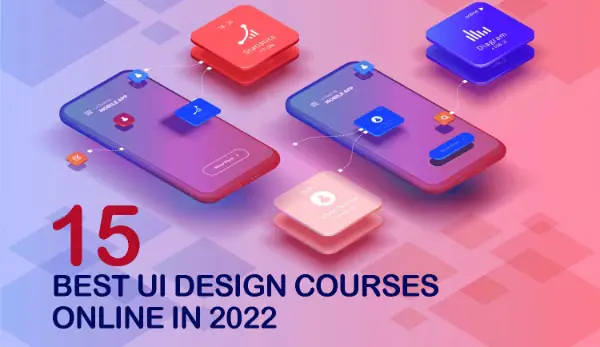Line25 is reader supported. At no cost to you a commission from sponsors may be earned when a purchase is made via links on the site. Learn more
Are you wondering what the availability is for UI design courses online? To help you find the best courses, we have compiled a list of some of the best – being offered by Interaction Design Foundation, also known as IxDF. The foundation is recognized as the world-leading provider of certifications in the UI/UX design industry.
What is UI design?
User Interface (UI) design is all about creating program interaction platforms that are both effective and appealing. It involves a deep understanding of users’ needs and preferences and a keen eye for detail. UI designers need to have a strong grasp of typography, color theory, contrast, and layout principles. They also need to be proficient in the latest design software tools.
The entire process of interface design may seem relatively easy from the user’s perspective, but from the designer’s point of view, it is quite complex and contains many parts. First, UI designers have to establish a good understanding of the user’s needs. Once that is done, they can start working on creating wireframes and prototypes. These are used to test the UI design and get feedback from users. Finally, the UI designer can create the final design after making any necessary changes.

Best UI Design courses online
Okay, let’s take a dive into the details of these 15 courses and how you can benefit from them.
1. Web Design for Usability
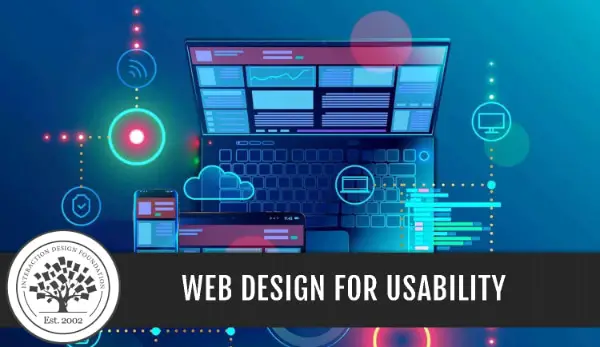
Course Time: 17 hours 12 mins over 9 weeks
User Level: Beginner
Certification Provided: Yes
Topics Covered:
- Concept of user-centered design and applying it to improve design usability
- Quickly evaluate the effectiveness and usability of design options
- Establishing clear, conceptual models early in the design phase
- How to involve users and get their feedback in the process
- Standard usability and accessibility guidelines for your designs
User Interface (UI) Design is crucial for any digital product. A well-designed UI can differentiate between a successful product and one that fails to meet user expectations. This course will teach you the principles of user-centered design and how to apply them to your designs to improve usability to make the product more effective.
You will learn how to evaluate the effectiveness of various design options along with their usability. The course is presented by William Hudson, a distinguished writer, and expert in user-centered design. By the end of this course, you will be able to create digital products that are both effective and easy to use.
2. Emotional Design – How to Make Products People Will Love
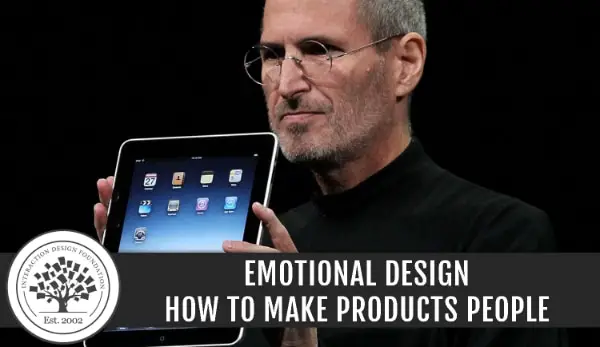
Course Time: 22 hours 55 mins over 7 weeks
User Level: Intermediate
Certification Provided: Yes
Topics Covered:
- How emotion and design are intertwined
- Factors affecting emotional response to a particular design
- Design products that generate positive emotional experiences
- Concept of Triune Brain and how to apply it for designing
- Various types of behavior and their link to design
- Integrating learnings of responsive behavior at each step of the design
The “Triune Brain” is a model that divides the human brain into three distinct parts. The first part is the reptilian brain, which controls our basic survival instincts. The second part is the limbic system, which governs our emotions. The third and final part is the neocortex, responsible for our higher-level cognitive functions such as reasoning and language.
This course will teach you how to create designs that can generate a very positive emotional response from the user. Taught by Human-computer interaction (HCI) specialist Alan Dix, this course will help you better understand the relationship between people and the objects they use on a daily basis. More importantly, it will help you create designs that can connect with the users at an emotional level.
3. Interaction Design for Usability
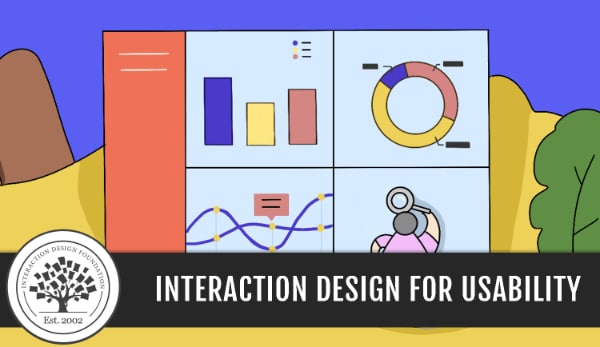
Course Time: 65 hours 17 mins over 17 weeks
User Level: Beginner
Certification Provided: Yes
Topics Covered:
- Basics of usability: visual design, navigation and menu design, search engine optimization, and accessibility
- How to create designs that are efficient and persuasive
- Concept of lean and agile processes
- Integrate user-centered design into lean and agile development
- Inculcating agile processes within the team and driving the concept of user-centered design
Usability is the most crucial aspect of User Interface design. Focusing on usability, this course is divided into three modules. The first module covers the basics of interaction design and usability. You will learn about the different types of user interfaces, how to design user-friendly interfaces, and how to troubleshoot common usability problems. The second module introduces you to lean and agile processes. You will learn about the different types of user stories, how to estimate user story points, and how to prioritize user stories.
Finally, the third module covers advanced topics in interaction design and usability. You will learn about UX research methods, how to design for different types of users, and how to optimize user interfaces for different devices. The course is designed for anyone who wants to learn about interaction design and usability, regardless of their team role. Whether you are a developer, project manager, or product owner, this course will equip you with the skills you need to create user-friendly products.
4. How to Become a Freelance Designer
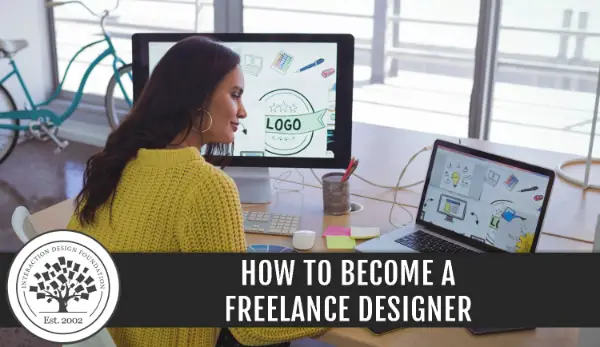
Course Time: 21 hours 50 mins over 7 weeks
User Level: Intermediate
Certification Provided: Yes
Topics Covered:
- Is freelancing for you?
- Process of setting up a successful freelance business
- Branding your services and selling them in the best possible way
- Handling daily operations as a freelancer
- Client handling and servicing
So, you want to be a freelance designer? Maybe you’re tired of the nine-to-five grind, or maybe you’re just looking for a way to make some extra cash. Either way, freelancing is a great way to get started in the design industry.
You should know a few things before you start your freelance journey. First, you need to have a strong portfolio that showcases your skills and experience. Second, you’ll need to market yourself effectively to attract clients. And third, you’ll need to be organized and efficient in your work to deliver high-quality results on time and within budget.
Luckily, there are plenty of resources to help you get started as a freelance designer. The Interaction Design Foundation offers an online course called “How to Become a Freelance Designer,” which covers all of the basics of starting your freelance business. In this course, you’ll learn how to overcome your fears, create a brand name for yourself, and attract clients. You’ll also get practical advice on setting up your freelance business, from choosing your rates to invoicing your clients.
5. UI Design Patterns for Successful Software
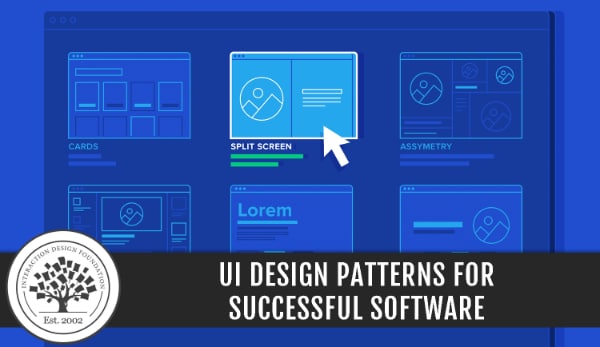
Course Time: 24 hours 22 mins over 8 weeks
User Level: Beginner
Certification Provided: Yes
Topics Covered:
- How design patterns can speed up design processes
- Types of UI design patterns and how to choose between them
- Organizing content to achieve maximum usability
- Ensuring a design that requires a minimum effort from the user for interaction
- Interconnection of User Experience (UX) and User Interface (UI)
User interface design patterns are the foundational elements that can help create the right structure to make a positive user experience. Online courses on UI design aim to provide you with the required knowledge about various structures and display methods and how you can solve existing design problems through it.
While the online course is focused on interface design patterns, it will also cover various theories and concepts related to UI design. The newfound knowledge will empower you to make the right decisions when it comes to choosing interface design patterns and thereby come up with effective designs that can please the user.
6. The Ultimate Guide to Visual Perception and Design
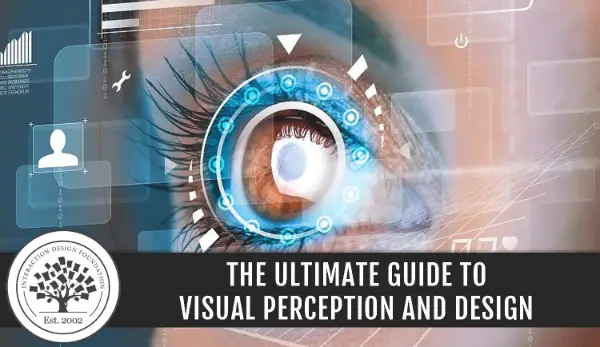
Course Time: 13 hours 34 mins over 5 weeks
User Level: Advanced
Certification Provided: Yes
Topics Covered:
- Formation of visual perception in humans
- Understanding the anatomy of the eye and its role in design understanding
- Various theories of human color vision
- Gestalt principles and their application to design
- Human perception of objects and how to use that knowledge in designing
If you are looking to upgrade your UI design knowledge by diving deeper into how humans visualize and comprehend interfaces, this course is perfect. It takes a step back and helps you learn about visual perceptions, the role of the human eye and brain in this process, and various theories related to it. In addition, this course will guide you through the process of designing user interfaces that are easy and enjoyable to use.
By the end of the course, you will learn how to consider the user’s needs when designing your interfaces and create visually appealing designs and take advantage of the user’s natural abilities. The course will also cover icon design principles and how to use imagery, context, and attention to create influential icons. By the end of the course, you’ll have a solid understanding of designing user interfaces that are both functional and visually appealing.
7. Conducting Usability Testing
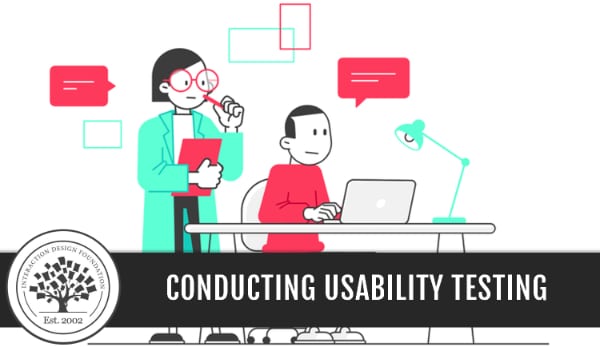
Course Time: 10 hours 33 mins over 3 weeks
User Level: Intermediate
Certification Provided: Yes
Topics Covered:
- What is usability testing and its process
- Configuring usability tests and setting test goals
- Building usability test plan using case studies
- Conducting smooth usability tests
- Generate a report which showcases the results of the test
- How to integrate the feedback of the usability test into the design to improve it
One of the critical components of the UI design process is usability testing. This lets you understand how good or bad your existing design is and what changes need to be made to make it better. This comprehensive course on usability testing will teach you how to answer key questions about your website or app’s effectiveness.
This course will teach you how to execute, analyze, and report successful usability tests. The good part of the assignments is that you can also form case studies out of them and use them for your portfolio. By running the test at the right design points, you will be able to design more effectively.
8. Journey Mapping
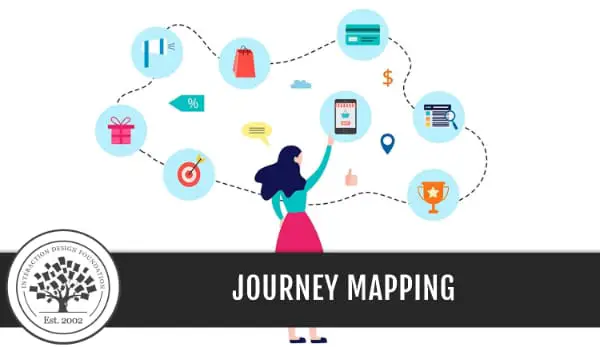
Course Time: 63 hours 58 mins over 7 weeks
User Level: Advanced
Certification Provided: Yes
Topics Covered:
- The evolution of the concept of journey mapping and its significance
- Choosing the best process that suits your goals
- Gathering data from various nodes of the journey
- Analyzing feedback received at different points of the journey
- Creation of various types of journey maps: experience maps, customer journey maps, service blueprints
- Transforming learnings of journey mapping into the creation of good designs
Journey mapping is a powerful technique that can help you understand the complete experience your users have with your product or service. By creating a map of their journey, from beginning to end, you can see where there are friction points or areas of confusion and identify opportunities to improve the experience.
This course will show you how to effectively use journey mapping in your design. You will be easily able to convert complex tasks into simple easy-to-execute processes making life easy for the users. Starting from newsletter subscription to shopping cart or other complex tasks, you will be able to translate them into an engaging and fun user experience.
9. Design Thinking: The Ultimate Guide
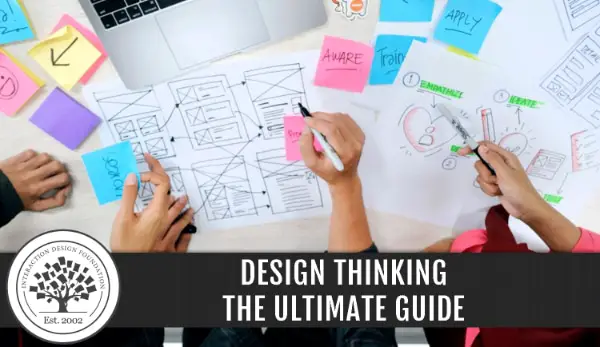
Course Time: 26 hours 35 mins over 8 weeks
User Level: Beginner
Certification Provided: Yes
Topics Covered:
- Using design thinking to generate innovative and user-centric solutions
- Practical design thinking methods that can help you make the process effective
- Inculcate a working culture based on a user-centric approach, empathy, ideation, prototyping, and playful testing
- Using ethnographic and analysis methods, such as interviews, focus groups, and surveys
- Quick prototyping to reduce risks and accelerate organizational learning
This course is ideal for anyone who wants to learn about design thinking and how to apply it in their professional work life. The course is divided into four sections, each covering a different aspect of design thinking. You’ll start by learning about the basics of design thinking, including its history and key concepts. Then, you’ll move on to the different phases of the design thinking process, from ideation to prototyping.
Finally, you’ll learn about some common tools and methods used in design thinking, such as user research and Brainstorming. Throughout the course, you’ll have the opportunity to put your new knowledge into practice through a series of practical exercises. By the end of the course, you’ll be well on your way to becoming a design-thinking practitioner.
10. The Brain and Technology: Brain Science in Interface Design

Course Time: 63 hours 58 mins over 7 weeks
User Level: Advanced
Certification Provided: Yes
Topics Covered:
- How human attention works and its implications on the design
- The link between human intuition and brain evolution
- Designing screens through brain science and visual recognition
- How human recollection works and its significance for the design
- Affect of social factors on the use of technology
- Building technology that is easy to learn for all sets of users
- An understanding of how human and social factors affect technology—including future social and technical evolutions
As we continue to use technology in our everyday lives, it’s essential to understand how human and social factors can affect how we interact with technology. In this course, you will be able to explore how brain science can help us design more user-friendly interfaces. The course covers human recollection, visual recognition, and future social and technical evolutions. By the end of this course, you’ll have a better understanding of how to design interfaces that consider how humans interact with technology.
The course is created and presented by Brian Whitworth, who has a wealth of experience. The modules are well-designed, and the course itself merges brain science with computer interface design. It provides students with an opportunity to learn how to design apps and software better from a human-computer interaction perspective.
11. Human-Computer Interaction – HCI

Course Time: 37 hours 0 mins over 9 weeks
User Level: Beginner
Certification Provided: Yes
Topics Covered:
- Introduction to Human-Computer Interaction and its implications on UI design
- Design processes for interaction design, navigation design, and screen design
- Role of cognition and perception and how they affect the experience of interactive design
- Role of human emotions in user experience
- Implementing suitable windowing systems, applications, architectures, and frameworks
- How to use numbers and statistics to evaluate user experience
This course is one of the best UI Design Courses online on this topic as it provides a comprehensive introduction and deep dive into HCI, so you can create designs that provide outstanding user experiences. Whether you are a newcomer to HCI or a professional, by the end of the course, you will have a deep understanding of the HCI fundamentals and at the same time, you will be able to gather the perception of the user.
Alan Dix, a specialist in HCI has created in-depth videos that are used as course material. The field of HCI is very vast, and the more you learn about it, the better you will be able to design user interfaces that the clients love. This course can be a good way to start learning more about this field.
12. Creativity: Methods to Design Better Products and Services
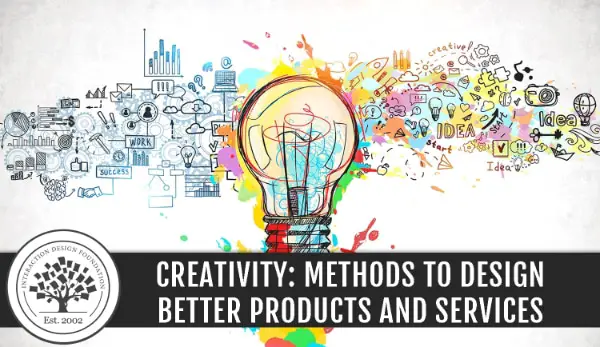
Course Time: 22 hours 44 mins over 5 weeks
User Level: Beginner
Certification Provided: Yes
Topics Covered:
- How to go about conducting brainstorming and ideation sessions
- Journey of ideation to concept development to product design
- Successfully manage creative projects in a time-bound manner
- Divergent ideation methods and how they can help generate innovative ideas
- Convergent ideation methods to solve creative problems through analytical thinking
- Building a conducive creative team environment
Creativity is the basic ingredient needed to make your design stand out. But, unlike the common misconception, creativity is less intuitive and more of a structured process. This course is about UI design and how to be creative when designing products and services. You’ll learn methods that will help you find novel and valuable solutions to a particular problem.
The course will be a huge help to designers who are looking for ways to boost their creativity. The idea is to learn the foundational elements of creativity and keep using them while designing. If you do this will, then in no time you be in a position where you can generate amazingly creative ideas that clients would love.
13. User Experience: The Beginner’s Guide

Course Time: 63 hours 58 mins over 7 weeks
User Level: Advanced
Certification Provided: Yes
Topics Covered:
- Understanding what is User Experience and the factors affecting it
- Key design principles that guide the design of UI and UX
- Psychological principles and theories that guide you to design better
- Human-computer interaction and cognitive processes
- Concept of visual perception and how to create designs suited to it
- How to balance usability and aesthetics
Designing a great user experience is essential if you want people to use your product or service. But what exactly is user experience design? And what do you need to consider when trying to create great user experiences?
User experience (UX) design is all about designing products and services that provide a good, intuitive, and satisfying experience for the user. It’s about understanding the users’ needs and creating solutions that meet those needs in the most effective way possible.
This beginner course on UX design gives you an understanding of many different disciplines, including psychology, anthropology, sociology, engineering, graphic design, and ergonomics. By the end of the course, you will be able to integrate UX and UI in a better way to create some stunning and practical designs.
14. How to Create Intuitive Products by Imitating Physicality
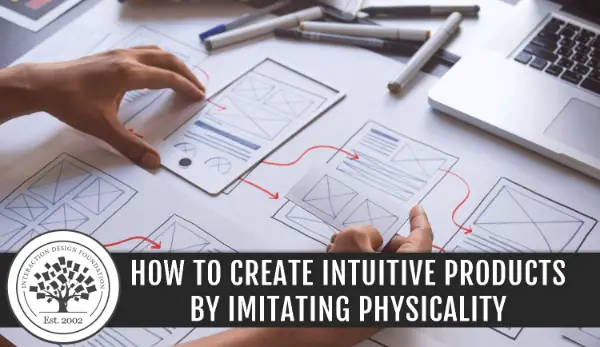
Course Time: 63 hours 58 mins over 7 weeks
User Level: Advanced
Certification Provided: Yes
Topics Covered:
- Concept of physicality and how to make design intuitive
- Incorporating physicality while designing
- Model devices for natural interactions through physigrams
- Use feedback loops to check and enhance your designs
- How to integrate various design elements seamlessly
Again, user interface (UI) design is all about how a product’s interface looks and feels to the user. It encompasses both the graphical elements of a product (e.g., buttons, icons, and layout) and how they interact (e.g., animation, transitions, and micro-interactions). These elements need to be in sync to deliver a better user experience.
This course will teach you the basics of UI design and how to create intuitive interfaces that users will love. You will also get an introduction to some of the tools and technologies used in UI design, such as Photoshop, Sketch, and InVision. By the end of this course, you will have the skills and knowledge to start designing beautiful and user-friendly interfaces for digital products.
15. Data-Driven Design: Quantitative Research for UX

Course Time: 63 hours 58 mins over 7 weeks
User Level: Advanced
Certification Provided: Yes
Topics Covered:
- Concept of quantitative research and its significance
- Quantitative vs. qualitative research
- Types of quantitative methods like surveys, analytics, A/B testing, and others
- How to screen and recruit participants for testing
- Analyzing test results and presenting them in a visually compelling way
Adopting a data-driven approach to designing is something that is always encouraged especially in UI or UX design. It is imperative that the designs elicit a positive response from the users. To know whether it does or not, you can rely on quantitative research which will provide you with the right methods of researching for your UI projects. Quantitative research allows you to understand user emotions in a larger picture.
The course is delivered by William Hudson who has over 50 years of software development experience and around 30 years of HCI experience. In this UI design course online, you will explore various quantitative research methods and learn how to apply them in your work as a UX designer. The course covers surveys, usability testing, logs and analytics, and A/B testing. By the end of the course, you will better understand how to use quantitative data to improve your designs.
Is there a demand for UI Designers?
The demand for good UI designers is rapidly rising, given the spiraling need for interactive devices. If you incline UI designing, now would be a good time to upskill yourself and launch yourself in this sector. One of the best ways to learn about UI designing is to take UI Design Courses online. Following are the reasons why this is a good idea:
- Learn about the latest trends and technologies in the industry.
- Improve your skillset and knowledge by learning from the experts.
- Network with other professionals in the field.
- Get hands-on working experience on different software and tools used in the industry.
- Learn about different methods of user research and testing.
- Develop impressive projects that can build your portfolio
- Get feedback from other professionals on your work.
- Improve your career prospects and open up new opportunities.
About Interaction Design Foundation – IxDF
Interaction Design Foundation (IxDF) is the world’s largest online design school and offers some of the best UI design courses online. Its mission is to make quality design education accessible for everyone—regardless of location, income, or previous experience. For this, they offer over 100 courses covering everything from user research and wireframing to prototyping and visual design. These courses are taught by industry-leading professionals and are available entirely online to learn at your own pace, from anywhere in the world.
In addition to their comprehensive course offerings, they also provide a wealth of resources for designers of all levels, including an extensive library of articles, tutorials, templates, and more. So whether you’re just getting started in your design career or looking to brush up on your skills, Interaction Design Foundation can help you every step of the way.
Large global companies and organizations rely on hiring designers from IxDF such as IBM, Adobe, GE, McAffee, and others. This alone speaks volumes about the credibility, integrity, and capability of the Interaction Design Foundation.

Why Take UI Design Courses Online with Interaction Design?
1. Learn from the best in the industry:
Interaction Design Foundation is home to some of the world’s leading UI designers. By taking one of their UI design courses online, you’ll be able to learn from the best of the best and gain valuable insights into the industry.
2. Stay up-to-date with the latest trends:
Interaction Design Foundation is always on top of the latest trends in UI design. By taking their courses, you’ll be able to stay ahead of the curve and keep your skills sharp.
3. Get hands-on experience:
The UI Design courses online give you practical experience working with UI design tools and techniques. You’ll be able to put what you’ve learned into practice and build up your portfolio.
4. Learn at your own pace:
IxDF’s UI design courses online are flexible and can be taken at your own pace. So whether you’re a beginner or a seasoned pro, you’ll be able to find a course that meets your needs that you can complete as per your timeline. Also, you get permanent access to all course materials, so you can refer to them when you want.
5. Learn from anywhere in the world:
Because the UI Design Courses are all online, you can access them from anywhere in the world. All you need is an internet connection. In addition, the website is highly compatible with all types of devices, which gives you the option of learning on the go as well.
6. Master new techniques and tools:
Interaction Design Foundation’s UI Design courses online will teach you new techniques and give you exposure to the latest tools in the industry. This will help you get proficient in the latest tools and be more competitive in the job market.
7. Improve your portfolio:
These courses will allow you to create real-world projects that you can add to your portfolio. In addition, this will showcase your skills to potential employers and help you land your dream job as a UI designer.
8. Join the Designer Community through Meet-ups:
The IxDF design courses offer a great way to connect with other UI designers worldwide. You’ll be able to collaborate, learn from each other, and build valuable relationships.
9. With One Subscription, Access all Courses:
Learning at IxDF is cost-effective because you just need to pay a monthly subscription. This will give you access to all the courses offered. Learn all you can by paying a flat fee.
10. Personal Grading System:
Interaction Design Foundation understands the complex nature of UI design studies. Hence, it does a personal grading of your course, unlike other online courses, which grade through a computer algorithm. This makes IxDF certification more credible and accepted by all major design companies.
The good part about Interaction Design Foundation is that it is completely focused on helping you, be it through their UX & UI design courses online or other basic resources. For designers wanting to learn more about User Interface, we have shortlisted the 15 best UI design courses online offered by IxDF.
Summary
The UI design courses online listed above are some of the best courses you can opt for if you want to enhance your UI design skills. Many other online websites offer design courses, but you need to choose the courses that best suit your needs. Following are the points you need to keep in mind when choosing an online design course:
- Make sure a credible institution accredits the online design course.
- Consider the online design course’s curriculum and make sure it covers the topics you’re interested in.
- Check the online design course’s teaching staff and ensure they’re qualified to teach the course.
- Find out what support the online design course offers, such as a forum or live chat.
- Make sure the online design course is compatible with your schedule and lifestyle.
- Read reviews of the online design course before enrolling to get an idea of what other students think.
With the proliferation of digital products in recent years, UI designers have become increasingly important in shaping the overall user experience (UX). A well-designed UI can make using a digital product feel effortless and intuitive; a poorly-designed one can frustrate even the most patient of users.
The challenge for UI designers is to create interfaces that meet users’ needs while also being visually appealing and easy to use. This can be difficult to strike, but it’s essential for creating successful digital products. Taking good UI design online courses is one of the best ways that UI designers can keep themselves updated in terms of trends and tools and deliver visually appealing and easy-to-use user interfaces.
